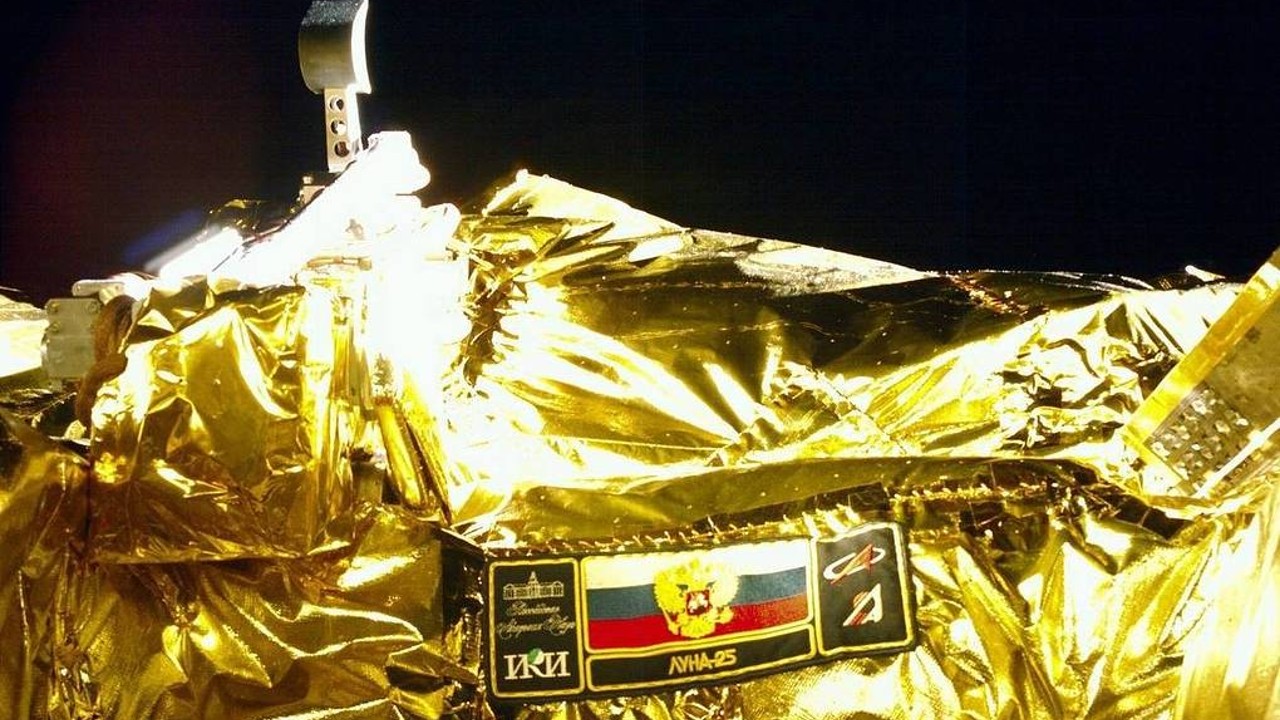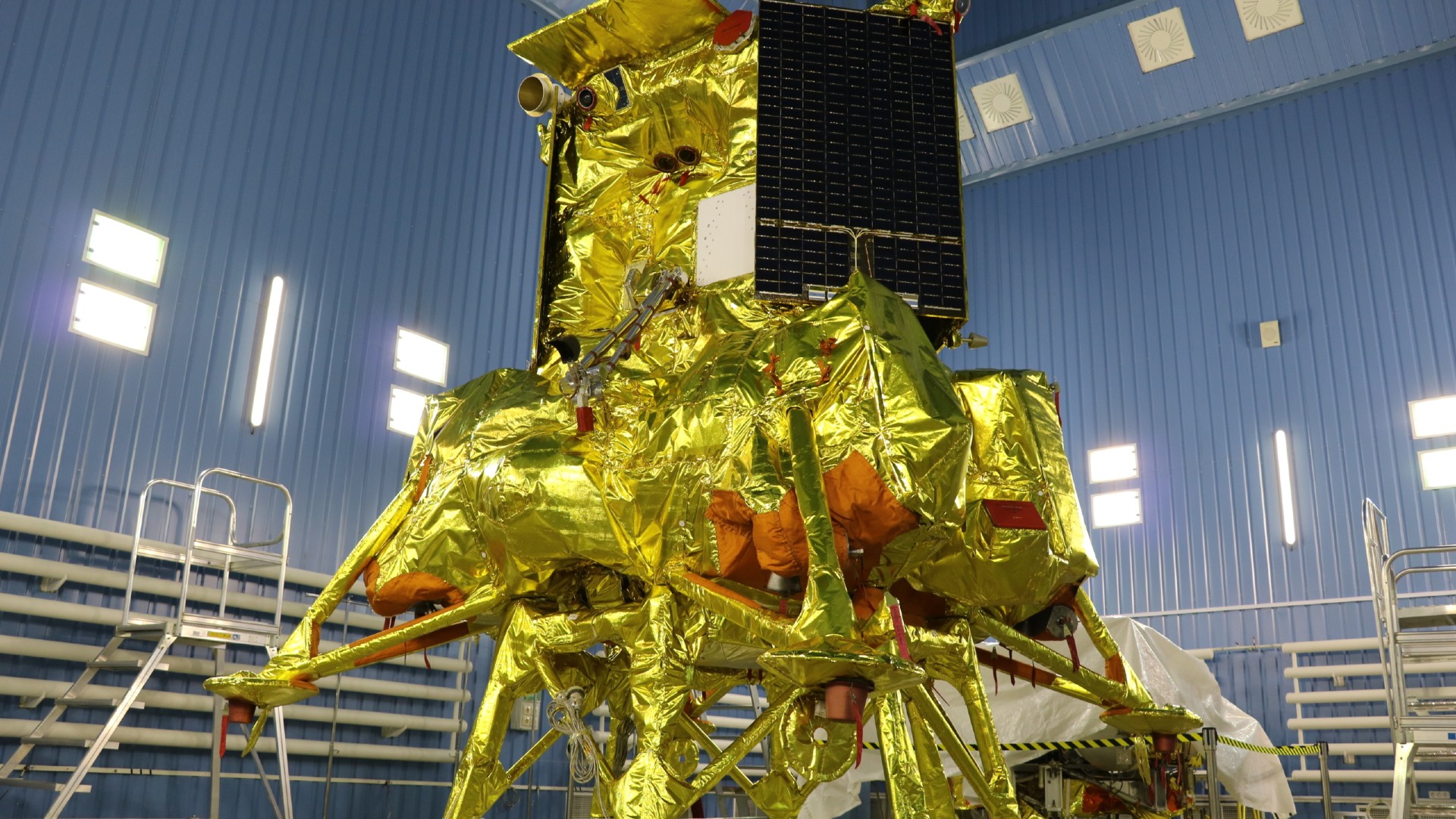
Update for Aug. 20: Russia's space agency Roscosmos has reported that the Luna-25 lunar lander has crashed into the moon.
Russia's first moon mission in nearly half a century may be in serious trouble.
The Luna-25 spacecraft was supposed to maneuver itself into its final pre-landing orbit around the moon today (Aug. 19), ahead of a touchdown attempt on Monday (Aug. 21) or thereabouts. But the probe encountered a problem during the engine burn.
"During the operation, an emergency situation occurred on board the automatic station, which did not allow the maneuver to be performed with the specified parameters," Russia's space agency Roscosmos wrote in an update on Telegram today (in Russian; translation by Google). "The management team is currently analyzing the situation."
Related: Not just Artemis: China and Russia plan to put boots on the moon, too

That's all we have to go on at the moment. But, as is often the case, speculation has filled the information vacuum.
"Russian internet is now filled with rumors/failure scenarios, and most of them assume that Luna-Glob (#Luna25) was lost. One argument is — had the problem been not fatal, Roscosmos would simply never mention it! ;)" Anatoly Zak of RussianSpaceWeb.com wrote on X (formerly Twitter) today.
Get the Space.com Newsletter
Breaking space news, the latest updates on rocket launches, skywatching events and more!
If Luna-25 is indeed dead, it would be quite a blow to Russia's space program. Luna-25 is the first moon mission developed by modern Russia, and the first for it or its forerunner state, the Soviet Union, since Luna-24 in 1976.
Luna-25 launched on Aug. 10 and reached lunar orbit six days later. It's supposed to touch down near the moon's south pole, perhaps as early as Monday.
The lander carriers eight different science instruments. If it does bounce back from today's glitch, Luna-25 will use that gear to hunt for water ice and perform a variety of investigations in the exotic south polar region, which has not hosted a lander or a rover to date.
Join our Space Forums to keep talking space on the latest missions, night sky and more! And if you have a news tip, correction or comment, let us know at: community@space.com.

Michael Wall is a Senior Space Writer with Space.com and joined the team in 2010. He primarily covers exoplanets, spaceflight and military space, but has been known to dabble in the space art beat. His book about the search for alien life, "Out There," was published on Nov. 13, 2018. Before becoming a science writer, Michael worked as a herpetologist and wildlife biologist. He has a Ph.D. in evolutionary biology from the University of Sydney, Australia, a bachelor's degree from the University of Arizona, and a graduate certificate in science writing from the University of California, Santa Cruz. To find out what his latest project is, you can follow Michael on Twitter.
-
Apollo11JVM Landing on Lunar surface is the most complex task in the entire journey. And yet we (USA) have mastered it and done it, with humans on board, multiple times! And that was over 54 years ago! As a contributor to Apollo 11 project, I am so proud of our unique accomplishment! This Russian Luna25 seems to have failed during landing an object, not a human. They have a long way to catch up with us.Reply -
Unclear Engineer Setting aside the politics, I note in the story carried on a competing website thatReply
"The targeted landing site is near the Boguslawsky crater at approximately 70 degrees south latitude in the south polar region of the moon."
That does not seem like "near the south pole" to me. Is that lunar latitude correct for that crater? Is so, is that close enough to the pole to expect water ice in areas that never see sunlight?
I got the impression that the Artemis landing areas would be much closer to the pole. There have been articles about how being at the pole could provide constant sunlight for solar cells, etc. instead of 2 weeks of darkness per month.
So, how do the landing sites for the Russian, Indian and Artemis projects compare?









